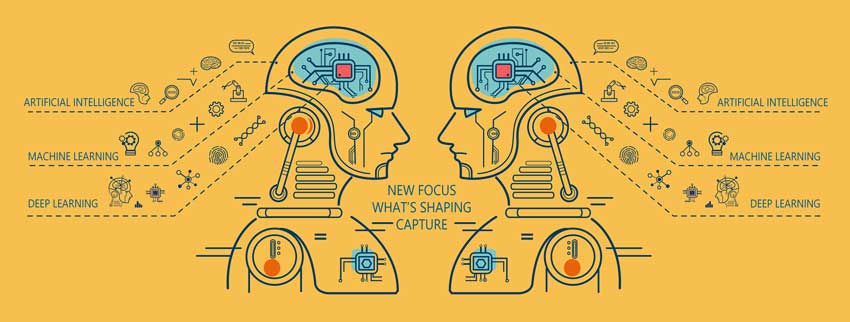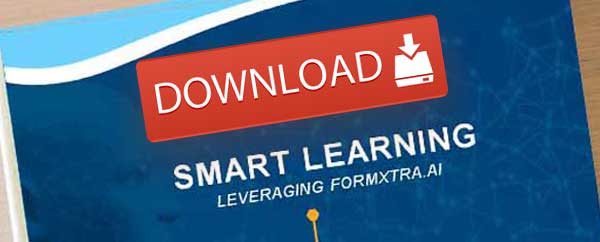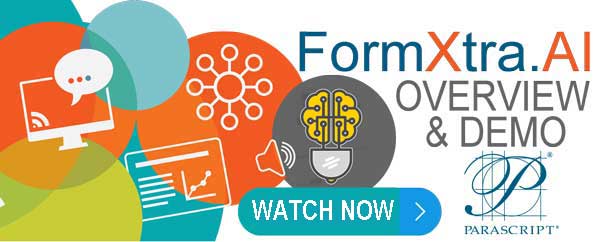 Advanced Artificial Intelligence (AI), a.k.a. “machine learning” or “deep learning,” forces a significant shift in how software solutions are evaluated, compared and ultimately acquired.
Advanced Artificial Intelligence (AI), a.k.a. “machine learning” or “deep learning,” forces a significant shift in how software solutions are evaluated, compared and ultimately acquired.
Imagine when shopping for a car if you had to download and review all of the owner manuals, run tests on engine horsepower and compression, and manually measure leg room and storage capacity in order to verify that a specific model meets your needs. It would be a nightmare. Ultimately, you’d most likely end up with buyer’s remorse and dashed expectations.
Business Technologies Scenario
That scenario plays out on a daily basis and is currently where we are when considering complex business technologies. This is especially the case with solutions that offer “advanced capture” capabilities. The good news is that we are on the verge of a promising new wave of capabilities that will make it as easy to evaluate and verify the ability for advanced capture, among other categories of business software, to meet specific objectives.
Applications of technology provide outcomes that enable us to become more efficient, reduce costs, improve precision and control in our activities, become more adaptable, or achieve a mix of these. Such are the core promises of technology, and they are equally applied to any technology from cars to mobile phones. The challenge when selecting any particular technology to solve a problem is to understand how well it is able to achieve your desired outcomes. Some technologies are easier to evaluate than others. This is where a lot of problems arise.
Test-driving Features
Some technologies are relatively easy to evaluate. If I am interested in a new sports car, I can get a good picture of performance based upon stated metrics such as horsepower, 0-60 acceleration, lateral acceleration and braking. If I need to understand more, I can test-drive it. Or, if I want to purchase a new smart phone, I can understand capabilities by looking at screen size and resolution, GPU chip, memory, etc. I can then go to a retailer and try several out. These are examples of technology that allow me to compare the ability to deliver an outcome based on features.
When it comes to other types of technologies such as software, understanding the ability to achieve an outcome can be much more difficult. If I am reviewing a CRM system, how can I easily understand whether it will make my organization more efficient, help to reduce costs, improve our forecasting and closing or be more adaptable? I can identify specific capabilities or features that would support this goal. However, to truly understand the ability to deliver, I either have to spend a good amount of time testing it – or just trust the vendor.
Advanced Capture & Its Core Promise
Advanced Capture is no different. The core promise of this solution area is to deliver more precise data at a lower cost. However, how can any organization actually verify whether an advanced capture solution can deliver? Unfortunately, the proxy to gaining this understanding is through examining features and trusting the vendor. We often hear questions such as “does your software support location of keyword-value pairs?” or “what image perfection processes does your solution support?” Layered on top of these are questions such as “what level of accuracy can you achieve on document type XYZ?” These questions are all just proxies to getting to the real question and need: Can your software deliver more information, more accurately, and at lower cost? There is, at best, an inefficient focus on features.
Getting back to the car analogy, imagine if every car manufacturer provided specifications in its own way such that it was impossible to make apples-to-apples comparisons. Or imagine that in order to test drive a car, you first had to learn how to drive it. This is where we are right now with software and particularly with advanced capture solutions because testing the ability for a solution to deliver on its promise takes an incredible amount of time and effort. The reality is that you cannot truly understand the potential of any solution without first becoming an expert in it.
We will increasingly see solutions that incorporate advanced AI, which eliminates the need to learn how to use it, allowing us to focus on actual outcomes.
The Good News
There is good news: we will increasingly see solutions that incorporate advanced AI in such a way that it eliminates the need to learn how to use it so that we can focus on actual outcomes. This can occur because machine learning can run on its own, identifying what are commonly referred to as “features” of a given task. In radiology, features might be graphical clues associated with a particular problem. In data analytics, it might be characteristics of data that can predict certain outcomes.
In advanced capture, AI can identify the layout of a particular document or relative positions of one data element to another. Feature identification allows machine learning models to develop abstractions for solving problems in much the same way as we do. We do not need to reference a manual when we encounter a stop sign. The features of the stop sign are assimilated into a model of how to drive a car.
The Real Value of Machine Learning
With advanced capture and machine learning, the ability for a system to automatically identify the key features of a given set of sample data allows the creation of highly precise classification and data extraction models without any need for those evaluating a given solution to understand how it is configured.
In essence, by allowing the system to focus on features of data, we can turn our focus to the inputs, and more importantly, the outputs that provide real proof of a system’s abilities. What would normally take weeks—if not months—to understand can be achieved in hours without any need for staff to learn or configure the system. This is the real value of machine learning.
###
>>If you found this article interesting, you might find this eBook useful:
>>Watch our webinar, now available on-demand: FormXtra.AI Overview with Demo:


